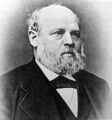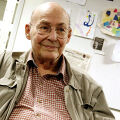Template:Selected anniversaries/January 24: Difference between revisions
No edit summary |
No edit summary |
||
| (3 intermediate revisions by the same user not shown) | |||
| Line 49: | Line 49: | ||
||1946: The United Nations General Assembly passes its first resolution to establish the United Nations Atomic Energy Commission | ||1946: The United Nations General Assembly passes its first resolution to establish the United Nations Atomic Energy Commission | ||
File:Goldsboro Mk 39 bomb.jpg|link=1961 Goldsboro B-52 crash (nonfiction)|1961: [[1961 Goldsboro B-52 crash (nonfiction)|Goldsboro B-52 crash]]: A bomber carrying two H-bombs breaks up in mid-air over North Carolina. The uranium core of one weapon remains lost. | File:Goldsboro Mk 39 bomb.jpg|link=1961 Goldsboro B-52 crash (nonfiction)|1961: [[1961 Goldsboro B-52 crash (nonfiction)|Goldsboro B-52 crash]]: A bomber carrying two H-bombs breaks up in mid-air over North Carolina. The uranium core of one weapon remains lost. | ||
||1966: Homi J. Bhabha dies ... physicist and academic. Pic. | ||1966: Homi J. Bhabha dies ... physicist and academic. Pic. | ||
| Line 80: | Line 76: | ||
||2016: David Ritz Finkelstein dies ... professor of physics ... Finkelstein and Charles W. Misner found the gravitational kink, a topological defect in the gravitational metric, whose quantum theory could exhibit spin 1/2. Finkelstein determined that whatever falls past the Schwarzschild radius into a black hole cannot escape it; the membrane is one-directional. Pic: https://www.researchgate.net/profile/David_Finkelstein2 (local copy) | ||2016: David Ritz Finkelstein dies ... professor of physics ... Finkelstein and Charles W. Misner found the gravitational kink, a topological defect in the gravitational metric, whose quantum theory could exhibit spin 1/2. Finkelstein determined that whatever falls past the Schwarzschild radius into a black hole cannot escape it; the membrane is one-directional. Pic: https://www.researchgate.net/profile/David_Finkelstein2 (local copy) | ||
</gallery> | </gallery> | ||
Latest revision as of 17:46, 7 February 2022
1798: Mathematician Karl Georg Christian von Staudt born. He will use synthetic geometry to provide a foundation for arithmetic.
1879: Glassblower, physicist, and inventor Johann Heinrich Wilhelm Geißler dies. He invented the Geissler tube, made of glass and used as a low pressure gas-discharge luminescence tube.
1961: Goldsboro B-52 crash: A bomber carrying two H-bombs breaks up in mid-air over North Carolina. The uranium core of one weapon remains lost.
1978: Soviet satellite Kosmos 954, with a nuclear reactor on board, burns up in Earth's atmosphere, scattering radioactive debris over Canada's Northwest Territories. Only 1% is recovered.
1988: Mathematician and academic Werner Fenchel dies. He established the basic results of convex analysis and nonlinear optimization theory which would, in time, serve as the foundation for nonlinear programming.
2016: Cognitive scientist and artificial intelligence researcher Marvin Minsky dies. Minsky's inventions include the first head-mounted graphical display (1963) and the confocal microscope (1957, a predecessor to today's widely used confocal laser scanning microscope).





